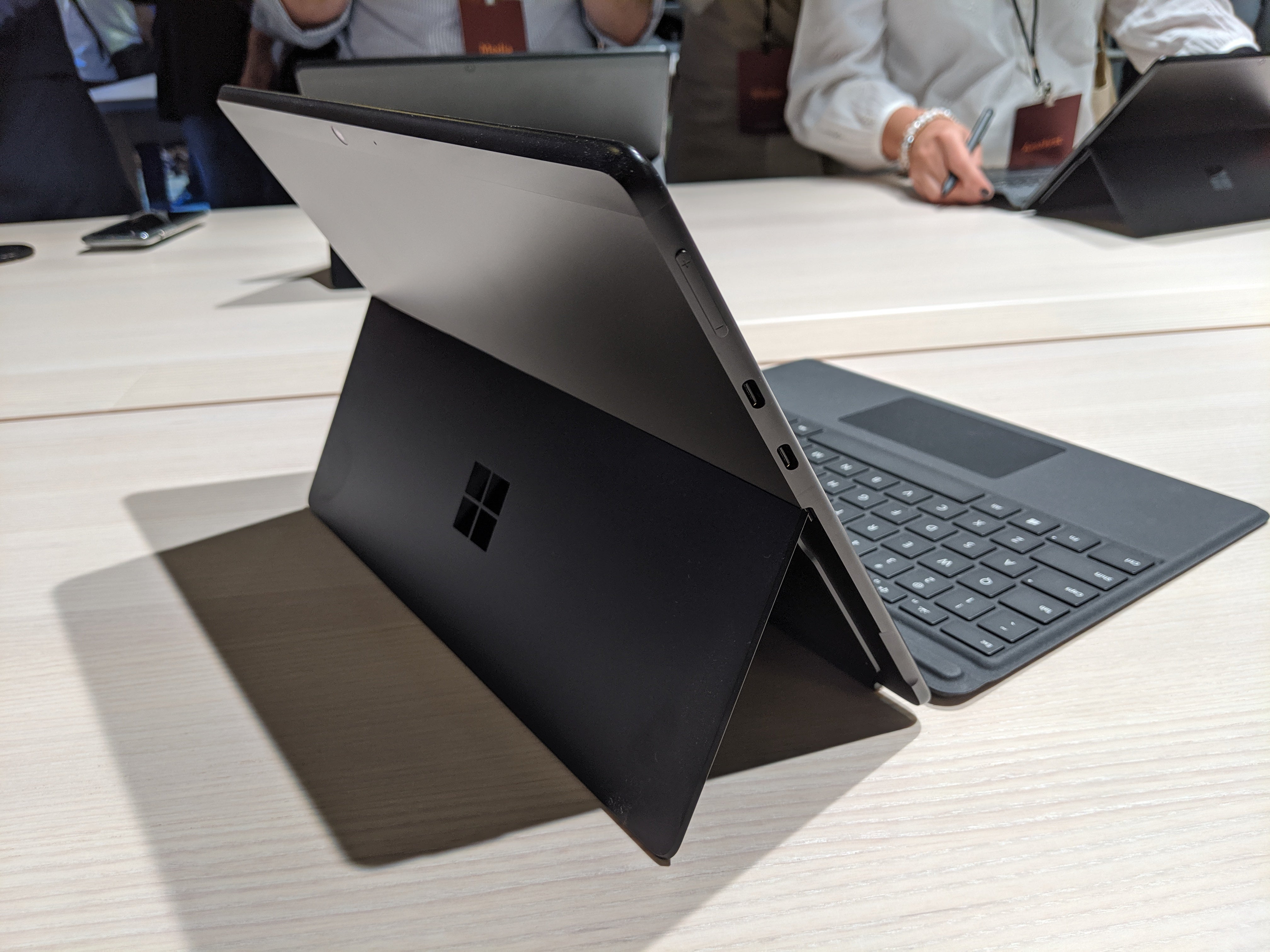

Admittedly, many users may have gotten used to this as smartphones continue to ditch that port and move to Bluetooth headphones or USB Type-C dongles. Perhaps the biggest omission is the lack of a headphone jack. I would have preferred another Type-C port there. But the only port on the right side is Microsoft’s proprietary Surface Connect port for charging and using the company’s proprietary docking station.

There are two USB Type-C ports on the left side, which is a huge improvement over prior Surface tablets that didn’t have this connector. Because it’s a tablet, I don’t mind the fact that there are few connections, but the selection is odd. If there’s one letdown in the design, it's the lack of ports. The Surface Pro X is of a similar size to the Samsung Galaxy Book 2, which is 1.8 pounds and 1.3 x 7.9 x 0.3 inches. The Surface Pro 7, which is hundreths of an inch thinner, does feel noticeably thicker with the old design. It’s 11.3 x 8.2 x 0.3 inches (287 mm x 208 mm x 7.3 mm) and it weighs just 1.7 pounds (it gets heavier at 2.4 pounds with the keyboard). In other words, it’s time for a significant performance upgrade from Microsoft.And this thing is super slim. In addition, we must remember that the existing SQ2 is based on the Qualcomm Snapdragon 8cx Gen 2 platform, which was a slight update to the Snapdragon 8cx first announced in late 2018. Interestingly, the Energy Star documents allege that the Surface Pro X uses an SQ2 SoC however, this is likely a placeholder.

The device carries the model number 2010, which was also found on a device that recently cleared the Federal Communication Commission’s regulatory hurdles. According to WindowsLatest, the next-generation Surface Pro X just received its Energy Star certification. We’ve already heard rumblings about the debut of the Surface Pro 8 and the Surface Duo 2, but signs are now pointing to an upgrade for the Surface Pro X. However, that could change tomorrow at Microsoft’s Fall Surface event. We haven’t seen many (if any devices) launch this year, and even Microsoft’s last Surface Pro X refresh was mild (to put it lightly) with a slightly enhanced SQ2 SoC. Things have been relatively quiet on the Windows 10 on Arm front for a while now.


 0 kommentar(er)
0 kommentar(er)
